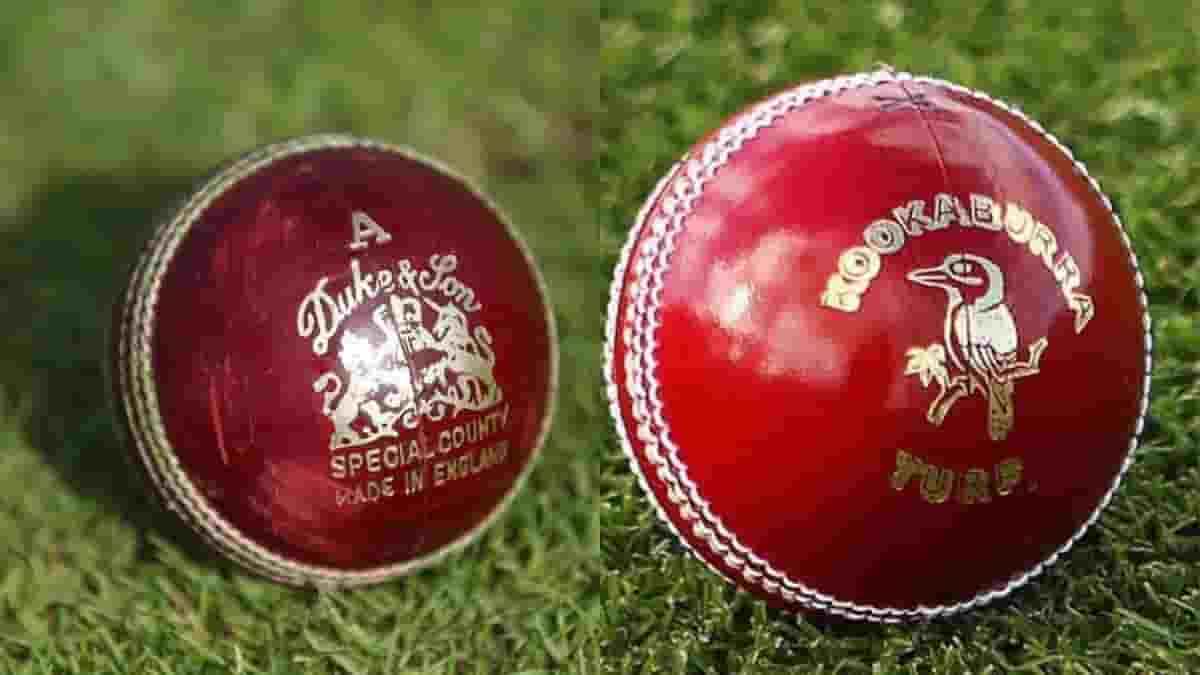
The type of cricket ball that is used is one of the most important factors in the game of cricket, which involves many other variables that affect the outcome. Different varieties of balls are used in Test cricket to accommodate the various playing circumstances and styles across the world because the ball can significantly affect the outcome of the match. The various cricket balls used in Test cricket and how they benefit certain players will be discussed in this article.
Dukes Ball:
In Test matches played in England, the Dukes ball is frequently used. It features a distinct seam and is hand-stitched with premium English leather. Particularly at the beginning of a match, the Dukes ball is renowned for its swing and seam movement. Bowlers who are able to take advantage of these circumstances, like James Anderson and Stuart Broad, do well with the Dukes ball. The obvious seam makes it difficult for batsmen to manoeuvre because it helps quick bowlers create movement off the pitch.
Kookaburra Ball:
In Australia and certain other countries that play cricket, the Kookaburra ball is frequently used. In comparison to the Dukes ball, it has a machine-stitched seam that is a little flatter. Because it tends to maintain its hardness for a longer period of time, the Kookaburra ball is advantageous for fast bowlers who rely on pace and bounce. With the Kookaburra ball, bowlers like Mitchell Starc and Pat Cummins succeed, using their speed to trouble the batsmen and extract bounce from the ground.
SG Ball:
For Test matches played in India, the SG (Sanspareils Greenlands) ball is the material of preference. It has a prominent seam that is hand-stitched using premium leather. Because it grips the pitch well, the SG ball helps spin bowlers produce turn and bounce. The SG ball has been successfully used by bowlers like Ravichandran Ashwin and Ravindra Jadeja in Indian conditions to confuse batters with their spin variations.
Duke-Kookaburra Hybrid Ball:
In some Test matches recently played outside of England and Australia, a hybrid ball was used. The Dukes and Kookaburra traits are combined in this ball. While preserving the durability and constant bounce of the Kookaburra ball, it has a tougher core and a more noticeable seam, comparable to the Dukes ball. This hybrid ball seeks to blend durability with swing/seam movement in order to adapt to various playing environments and provide opportunities for both fast bowlers and batsmen.
Pink Ball:
In day-night Test matches, a distinctive variation is used: the pink ball. In essence, it is a Kookaburra ball, however pink is used instead of the usual red to make it more visible in floodlights. Particularly during the evening session, the pink ball swings more frequently than the red one does. Players will have a different difficulty with this ball because it can behave differently under lights. Trent Boult and Mohammed Shami are two successful bowlers who have had success using the pink ball.
Conclusion
Based on the playing circumstances and geographic areas, different types of cricket balls are used in Test matches. The Dukes ball has swing and seam movement, which favours bowlers who can take advantage of these circumstances. Fast bowlers who depend on their speed benefit from the durability and bounce that the Kookaburra ball offers. The hybrid ball tries to create a balance between swing, seam, and durability while the SG ball helps spin bowlers by helping them grip the pitch. With its swing characteristics, the pink ball used in day-night Test matches gives the game a new dimension. Test cricket is a fascinating and varied spectacle since each ball type brings different difficulties and opportunities for players.
Also Read: What is Bazball? Will it work in the Ashes?
“Get more breaking news, cricket updates, fixtures, and trending news only on cricfiles.com. Follow us on Facebook or Twitter and Subscribe to our YouTube Channel today.”




